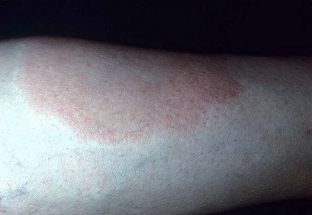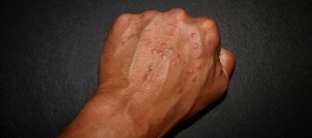The reasons for the development of granuloma annulare have not yet been accurately determined, however, scientists tend to assume an active role in its occurrence of skin trauma, as well as increased activity of tissue macrophages due to the activation of peripheral blood monocytes, which may indicate hidden inflammation. Diagnosis of granuloma annulare can be difficult because the symptoms of the disease are often similar to other annular skin lesions. What principles should be followed when choosing a therapy, we will follow from estet-portal.com.
Characteristic signs of granuloma annulare and its types
Granuloma annulare is an idiopathic skin disease with a benign course. It is common in both children and adults and presents as smooth annular plaques and skin-colored papules. Usually, the rash first appears on the wrists, feet, and ankles, although it can later appear anywhere on the skin. The disease is most often asymptomatic, but sometimes patients complain of mild itching. Granuloma annulare affects women more often than men and usually develops before the age of 40. Granuloma annulare is divided into the following clinical forms:
- localized,
- perforated,
- generalized,
- actinic,
- subcutaneous.
Localized granuloma annulare is considered the most common and most common clinical form, with approximately 75% of cases being diagnosed. Usually, the patient has one or more papules, erythematous or pale, skin-colored. Papules may be isolated from each other, but sometimes coalesce into plaques. Rash elements with localized granuloma annulare are 1-5 cm in diameter, have raised edges and a smooth surface. Most often, the rash appears on the legs, while the palms and feet remain unaffected. The elements of the rash with granuloma annulare, unlike dermatophytosis of the body, are not accompanied by peeling of the skin, vesicles or pustules are not observed.
Approximately half of patients with localized granuloma annulare will spontaneously recover within two years.
The generalized form of granuloma annulare is characterized by a more widespread rash. Spontaneous recovery with this form of granuloma is less likely when compared with the localized form. It is also not worth expecting an early remission, it is possible for at least 3-4 years.

The perforated form of granuloma annulare is manifested by small papules, while there is a characteristic retraction of the skin in the center, and the papule becomes like a navel. Localization of papules with this form of granuloma mainly occurs on the hands, on the fingers and toes
The subcutaneous form of granuloma annulare is characterized by large skin-colored nodules. They are found in subcutaneous adipose tissue or in the lower layers of the dermis.

Read also: Why is it important to diagnose ring-shaped inflammatory skin lesions
Peculiarities of diagnosis and choice of therapy in granuloma annulare
Although the etiology of granuloma annulare is not known, it is believed to be caused by vasculitis, trauma, monocyte activation, or a Type IV delayed skin hypersensitivity reaction.
The diagnosis of granuloma annulare is based on clinical presentation. Laboratory tests for this disease are not sufficiently informative. One of the characteristic symptoms of a generalized form of granuloma, which can still be detected in laboratory tests, is impaired glucose tolerance. But this symptom is also not always manifested.
Because granuloma annulare is most often asymptomatic and causes no concern to patients, specific treatment is not required. For patients with severe itching and inflammation of the skin leading to cosmetic defects, the following treatments can be tried:
- injections of corticosteroids at the sites of the most severe lesions,
- topical corticosteroids,
- cryotherapy,
- ultraviolet light treatment,
- systemic drugs (eg, dapsone, colchicine, delagil.
While these therapies have improved symptoms in some patients, none of them has a measurable advantage over the others and does not lead to recovery. Their effectiveness is difficult to evaluate because the course of granuloma annulare is very variable.







Add a comment